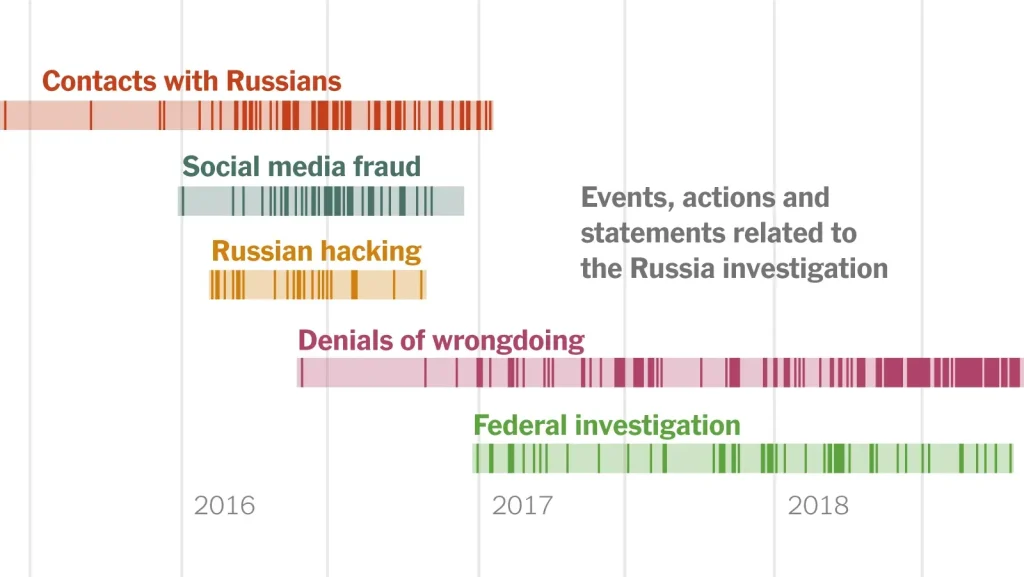Byelection interference can significantly disrupt the election process, posing challenges not just for political candidates but also for voters trying to engage meaningfully in democracy. This recent situation surrounding the byelection, where activist group efforts have created confusion on the ballot, raises critical questions about transparency and fairness in the electoral process. Critics, including independent candidate Bonnie Critchley, have vehemently described these tactics as a form of legalized electoral interference, which undermines voter trust and engagement. The actions of groups like the Longest Ballot Committee not only complicate voters’ decisions but also threaten the integrity of the democratic process itself. As candidates rally to prepare for this crucial byelection, the looming threat of interference casts a shadow on the overall voter experience.
The ongoing saga of interference in the byelection comes to light as various factions, including activist organizations, attempt to manipulate the electoral landscape. Known also as electoral meddling, this situation raises alarms about the ramifications for all involved, especially legitimate candidates striving to uphold a fair voting environment. The tactics employed by committees aimed at complicating ballots can distort the election experience, creating overwhelming choices for voters that ultimately diminish authentic engagement. As candidates face this unexpected hurdle, the need for a streamlined, legitimate election process becomes ever more apparent, highlighting the vital importance of ensuring a democratic system free from such disruptive actions. Engaging citizens in a straightforward voting mechanism is crucial for the health of any electoral system, especially during crucial byelections where every vote counts.
Election Process Challenges: Understanding Byelection Interference
The byelection process is critical for ensuring representative democracy, but recent efforts by activist groups have thrown this process into question. Specifically, the interference tactics employed by the Longest Ballot Committee have raised alarms among legitimate political candidates. By inundating the election ballot with an overwhelming number of options, they threaten to obscure genuine candidates and confuse voters. Such disruption not only endangers the integrity of the vote but also raises serious concerns about election fairness and transparency.
Candidates like Bonnie Critchley have articulated the dangers posed by these tactics, labeling them as a form of legalized electoral interference. The impact of these actions extends beyond mere confusion; they can lead to voter disengagement and apathy, undermining efforts aimed at promoting civic participation. It is essential to recognize that when the electoral process is compromised, the entire democratic fabric is at stake, with potential repercussions that go beyond this byelection.
Voter Engagement in the Face of Disruption
Voter engagement is vital to the health of any democracy, and the tactics employed during the current byelection pose a serious threat to this engagement. The actions of the Longest Ballot Committee could deter voters who may feel overwhelmed by the sheer number of candidates and options on the ballot. This situation not only complicates voting but risks discouraging citizens from participating altogether, as they may feel their choices are muddled or insignificant in the face of such disruption.
Moreover, an engaged electorate is crucial for the success of democratic processes, and initiatives that undermine it can lead to misrepresentation of public sentiment. Political candidates depend on clear and direct voter feedback to shape their campaigns effectively. If voters are confused or frustrated by the election process, their ability to exercise their rights diminishes, leading to a less representative outcome that fails to reflect the true desires of the populace.
The Role of the Ballot Committee in Shaping Elections: A Double-Edged Sword
The Longest Ballot Committee’s approach to shaping the electoral landscape is both controversial and complex. While their intention might be to create a more diverse slate of candidates, the reality is that excessive options can result in voter fatigue and dissatisfaction. By introducing a multitude of candidates—many of whom may not have the support or resources of established political figures—this approach risks diluting the effectiveness of legitimate campaigns and decreasing the overall quality of democratic participation.
Candidates like Pierre Poilievre have criticized the Ballot Committee’s interference as a deliberate attempt to disrupt the electoral process. This criticism hinges on the belief that a well-structured and straightforward ballot is essential for allowing voters to make informed decisions. Ultimately, the committee’s tactics could yield unintended consequences, leading not only to chaos at the ballot box but also potentially influencing the election outcome in ways that do not reflect the genuine choices of the electorate.
The Impact of Byelection Interference on Political Candidates
Political candidates are directly impacted by the actions of groups like the Longest Ballot Committee, which aim to disrupt the electoral process. Their interference adds an unpredictable element to the byelection, making it more challenging for candidates to connect with voters and communicate their platforms clearly. Candidates like Critchley and Poilievre have expressed concerns that such disruption could skew perceptions and alter the dynamics of the race, ultimately impacting their potential success.
As candidates work to navigate this chaotic environment, they must focus on maintaining voter trust and loyalty. Campaign strategies may need to adapt to address the disruption caused by interference, emphasizing transparency and clear communication. The ultimate objective for all candidates should be to ensure that voters feel empowered to engage in the election process, regardless of the noise created by activist groups seeking to derail legitimate electoral efforts.
Ensuring a Fair and Democratic Byelection Process
The integrity of the byelection process hinges on fairness and transparency—which is currently threatened by the tactics of the Longest Ballot Committee. To ensure that the democratic process remains intact, it is essential for election officials, political candidates, and voters alike to stand against interference efforts that seek to undermine the foundational principles of democratic engagement. By promoting a more streamlined ballot, candidates can focus on meaningful dialogue with voters and foster genuine connections.
Furthermore, mechanisms must be put in place to protect the election process from disruptive interference. This could include clearer guidelines on how many candidates can be officially recognized or measures to simplify the voter experience. A fair byelection allows for the full, authentic participation of the electorate and ultimately strengthens democracy, ensuring that the voices of citizens are not lost in chaos.
Building a Better Future for Electoral Engagement
The challenges posed by byelection interference compel us to look at the bigger picture regarding electoral engagement. It is critical for political candidates, civic organizations, and voters to collaborate in creating a system that encourages participation without fear of confusion or disruption. Initiatives aimed at educating voters on how to effectively navigate the ballot will help restore confidence in the electoral process, enabling citizens to make informed decisions.
Investing in voter education campaigns and promoting civic involvement can significantly enhance democratic participation. By addressing the issues created by groups that seek to overwhelm the electoral system, we can pave the way for a stronger, more vibrant democratic future. Ensuring a clear and accessible election process is key to rebuilding trust among voters and candidates alike, fostering a political atmosphere that values engagement over obstruction.
Legislative Solutions to Combat Byelection Interference
To combat the growing concerns surrounding byelection interference, legislative measures need to be considered and implemented. Lawmakers must address the loopholes that allow groups like the Longest Ballot Committee to disrupt the electoral process by inundating the ballot with excessive candidate options. Engaging in dialogue with electoral commissions and other stakeholders is pivotal to find balanced solutions that will uphold the integrity of elections while still allowing for individual expression among candidates.
Moreover, tightening regulations around campaign practices and ballot submissions could help mitigate the risk of electoral chaos in future byelections. By creating a framework that fosters fair competition and protects against interference, we can ensure that the democratic process remains robust and representative of the will of the people. Implementing these solutions will not only protect the election process but also restore public confidence in the efficacy of democracy.
The Importance of Clear Candidate Messaging
In the current electoral atmosphere clouded by byelection interference, the importance of clear and concise messaging from candidates cannot be overstated. Voters need to feel equipped with knowledge about each candidate’s vision and policies, allowing them to make informed choices at the ballot box. When candidates promote their messages effectively, they can break through the noise created by disruption tactics and resonate with the electorate.
Moreover, candidates must leverage various communication platforms to engage voters and clarify their positions. Through social media, community events, and town hall meetings, candidates can establish a direct line of communication with constituents, addressing any confusion stemming from the chaotic electoral environment. It is only through robust and transparent dialogue that political candidates can solidify their support and foster an atmosphere of engagement that transcends attempts at undermining the byelection process.
Engaging Voters Amidst Chaotic Byelection Tactics
Engaging voters amidst the chaotic environment created by byelection interference is a formidable challenge to political candidates. As activists introduce tactics that cloud the ballot and confuse voters, it becomes crucial for candidates to devise innovative strategies that prioritize outreach and education. Building strong community ties and understanding the concerns of potential voters are essential steps toward fostering an environment where participation flourishes, despite external disruption efforts.
Candidates might find success in grassroots initiatives that focus on demystifying the voting experience and emphasizing the importance of each vote. Creating informative materials that clarify the election process and highlight the stakes at play can empower voters to take action. By championing voter engagement efforts, candidates not only counteract the chaos of interference but also reinforce the vital link between an informed electorate and a thriving democratic process.
Frequently Asked Questions
What is byelection interference and how does it impact the election process?
Byelection interference refers to activities that disrupt or manipulate the electoral process during a byelection, such as overwhelming the ballot with superfluous candidates. This can confuse voters and undermine a fair democratic process, ultimately affecting the legitimacy of the results.
How does the Longest Ballot Committee’s activities relate to byelection interference?
The Longest Ballot Committee’s tactics, which inundate the byelection ballot with unnecessary options, have been described as a form of legalized byelection interference. Their actions can obscure the choices available to voters, potentially deterring meaningful voter engagement.
What are the concerns raised by candidates regarding byelection interference?
Candidates, including independent candidate Bonnie Critchley, have expressed concerns that byelection interference, specifically through tactics like those employed by the Longest Ballot Committee, could lead to voter confusion, chaos at the polls, and ultimately compromise the integrity of the democratic process.
How can byelection interference affect voter engagement?
Byelection interference can negatively impact voter engagement by overwhelming voters with excessive options, which may lead to apathy or confusion. When voters cannot easily discern viable candidates, they may choose not to participate, undermining the democratic process.
What steps can be taken to prevent byelection interference?
To prevent byelection interference, it is crucial to ensure transparency in the election process, enforce regulations against misleading tactics, and promote clear communication about candidates and their platforms. This helps maintain the integrity of the electoral process and fosters genuine voter engagement.
Why is the situation of byelection interference particularly concerning for candidates like Poilievre?
The situation of byelection interference is particularly concerning for candidates like Poilievre because such tactics can disrupt not only their campaigns but also the overall electoral outcome. This interference raises fears of unfair advantage or confusion among voters, which could hinder legitimate political candidates’ chances of success.
What role does the Ballot Committee play in byelection interference?
The Ballot Committee, such as the Longest Ballot Committee, plays a controversial role in byelection interference by adding numerous candidates to the ballot, which can overwhelm voters. Their actions can distort the election process and diminish the impact of serious candidates within the democratic framework.
| Key Point | Details |
|---|---|
| Activist Group’s Tactics | The Longest Ballot Committee is overwhelming the byelection ballot with numerous candidates, raising concerns from legitimate candidates. |
| Response from Critchley | Bonnie Critchley has described the tactics as ‘legalized electoral interference’ that undermines democracy. |
| Impact on Voter Engagement | Candidates worry that the influx of unwanted ballot options may confuse voters and deter genuine participation in the byelection. |
| Criticism from Poilievre’s Campaign | Poilievre’s campaign has condemned the group’s actions as a deliberate effort to disrupt the electoral process. |
| Overall Concern | There is a shared fear among candidates that this interference could significantly impact the byelection’s outcome. |
Summary
Byelection interference is a growing concern as activists seek to skew the electoral process by overwhelming ballots with unnecessary options. This not only angers legitimate candidates but also poses a risk to real voter engagement and the integrity of the byelection. Addressing these tactics is essential for ensuring a fair democratic process.



